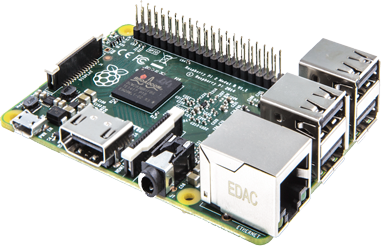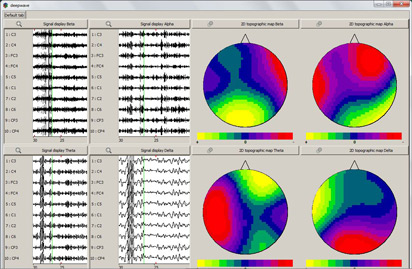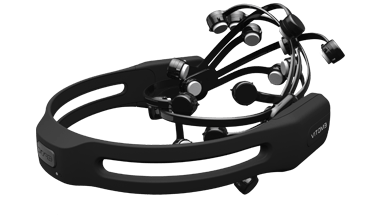DeepWave for the Hobbyist
Because DeepWave is initially implemented on the Raspberry Pi it may be a suitable project for the home hobbyist. This section provides build notes, tips, and tricks for building your own DeepWave.
Raspberry Pi Model B 2 +
The Raspberry Pi is a credit card sized fully functioning computer with networking and standard inputs and outputs right on the board. The Pi also comes with a GPIO header to interface electronically with sensors and output devices making it a fully customizable platform for any project requiring affordable lightweight computing power. DeepWave depends on the PI GPIO pins to generate light pulses, and C++ libraries to generate binaural beats.
OpenVibe
 A terrific software package for processing EEG signals is fundamental in harnessing brainwaves for neural entrainment. The DeepWave uses OpenVibe from Inria to take raw voltages measured at the scalp and translate that into usable data. OpenVibe is open source, and uses XML documents to program the processing pipeline. Incredibly customizable from an XML GUI, there is also potential for creating new functions programmed in its native language of C++.
A terrific software package for processing EEG signals is fundamental in harnessing brainwaves for neural entrainment. The DeepWave uses OpenVibe from Inria to take raw voltages measured at the scalp and translate that into usable data. OpenVibe is open source, and uses XML documents to program the processing pipeline. Incredibly customizable from an XML GUI, there is also potential for creating new functions programmed in its native language of C++.
Emotiv Epoc
The current prototype version of DeepWave is also based upon the Epoc EEG headset from Emotiv. Selected for convenience and the number of sensors, the base price of an Emotiv Epoc starts around $400, but in order to read raw EEG a research license is required, which doubles the initial cost. Future models will explore the feasibility of implementing the much more affordable Neurosky Mindwave which is also fully supported by OpenVibe software.
Custom Solutions
Currently the DeepWave is a custom package that can be matched with many consumer grade EEG headsets, or can also be packaged with a headset to fit most budgets. Because each unit requires custom hardware and software configurations we ask that you contact Senseworld Industries directly to inquire about purchase.
